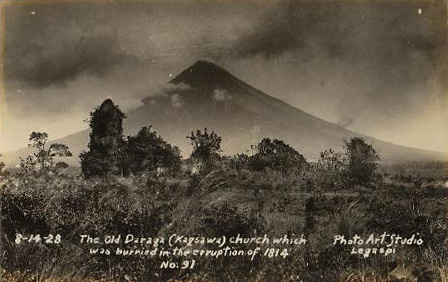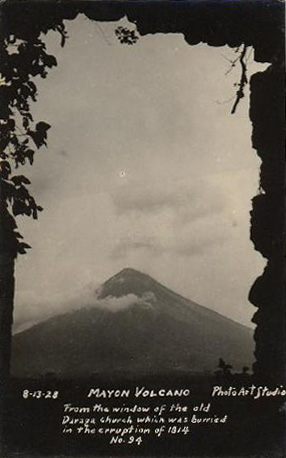Mt Mayon Volcano Eruption, 1814
Share this page:
At 8am on February 1, 1814, began the most deadly recorded eruption of Mt Mayon, in which more than 1,200 people were killed.

The remains of old church of Cagsawa (near Daraga, Luzon, Philippines) which was buried by the eruption of Mt Mayon (Luzon, Philippines) in 1814. Mt Mayon can be seen in the background.
After a number of seismic shocks, a thick column of stones, sand and ash shot high into the air. The sides of the mountain were hidden by veils of ash, smoke and vapour. A fiery stream of lava dashed down the side of the mountain and the sky darkened. Then stones began falling to earth killing many people. Even houses offered no protection as the stones were red hot and set buildings on fire.
After the eruption ceased, large numbers of dead and injured people lay everywhere. The whole town of Cagsawa was buried. Just the tops of buildings and coconut trees protruded from the debris. The formerly beautiful cultivated slopes of Mt Mayon were now just covered with sand and ash.
One particularly sad incident occured when the priest of the church in Cagsawa church ordered the bells to be rung to warn the local people of the eruption. Hundreds of people took refuge in the church, but unfortunately the lava stream and accompanying ash surrounded and covered the church, killing about 200 people inside.
Today the blackened remains of the church tower and of the priest's house and convent house still remain to recall this poignant event. The survivors rebuilt their church and a new settlement nearby at Daraga.

View of Mt Mayon from the window of the old Cagsawa church (near Daraga, Luzon) which was buried by the Mayon eruption of 1814